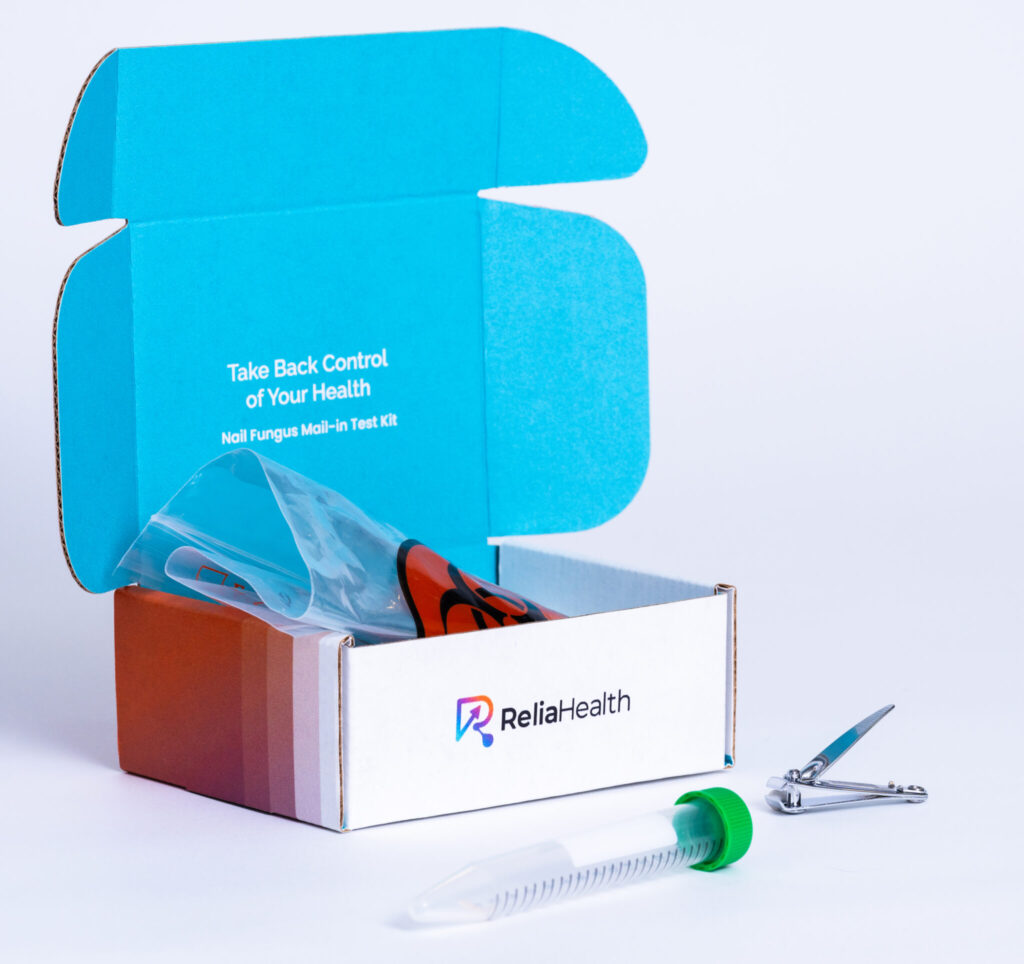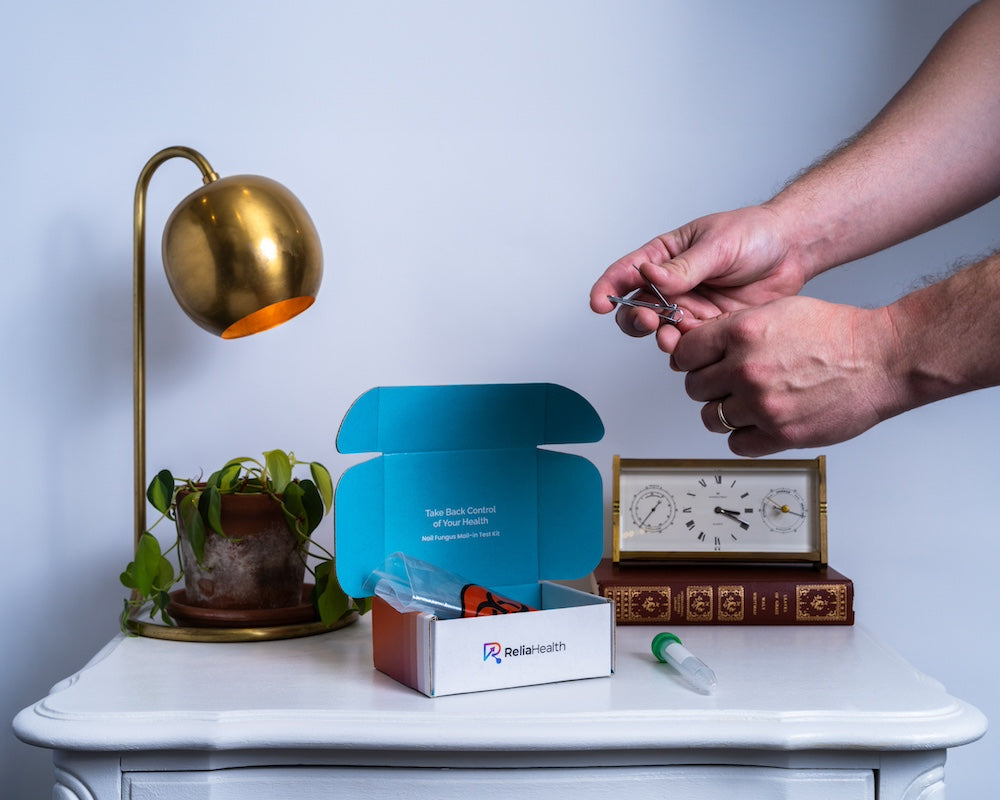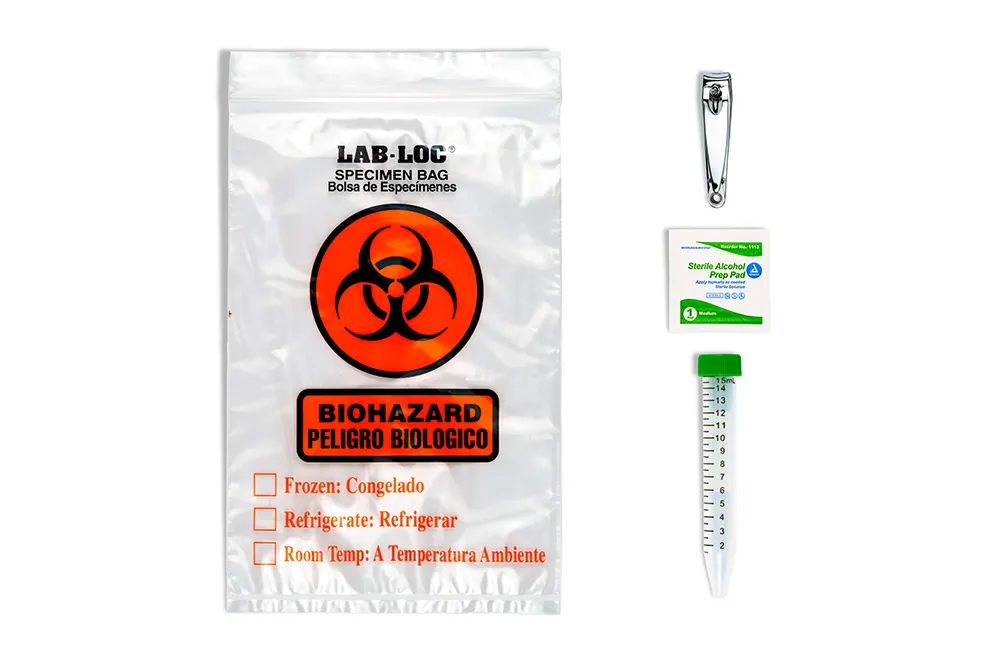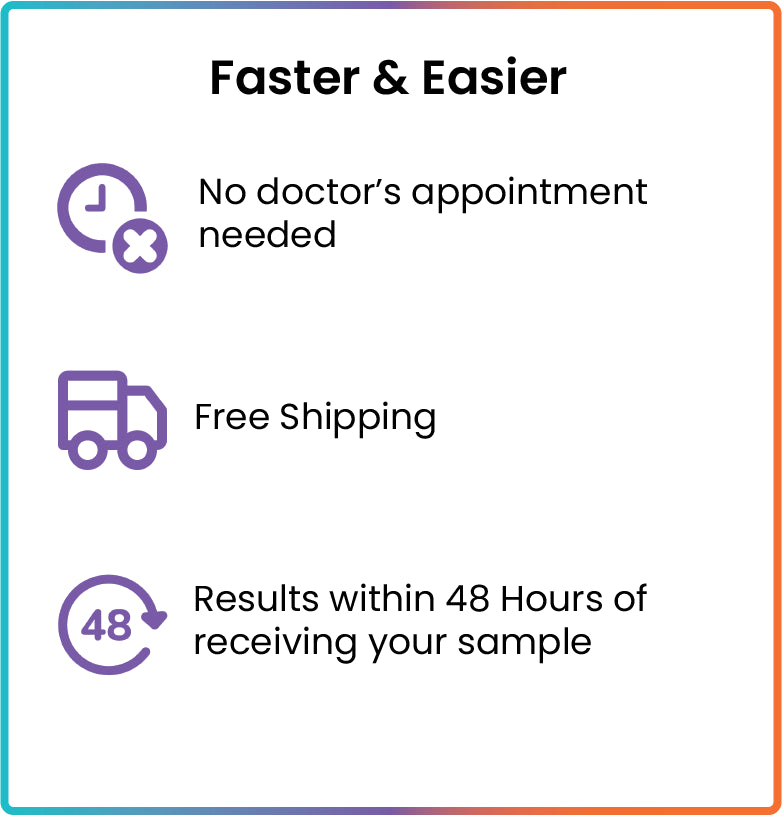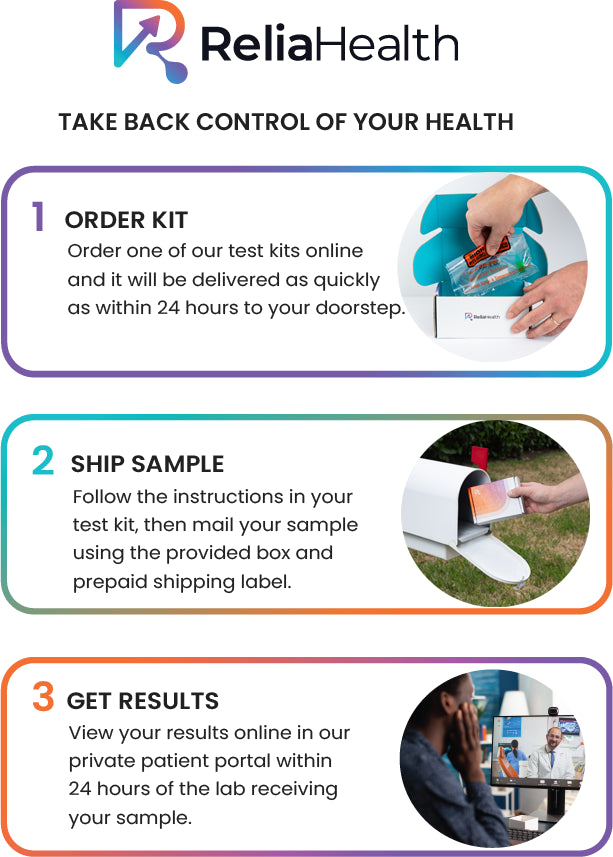
Physician
trusted

Antibiotic sensitivity panel included

Highest level of accuracy available

Results in Under
48* Hours

Telehealth
Compatible
Not available in NY, HI or AK
Details
What sets ReliaHealth Nail Fungus tests apart from all others?
The ReliaHealth RT-PCR test can detect more than 5x more fungal organisms than other conventional tests and delivers 98% accurate and sensitive results. Our tests also look for bacteria, something other culture tests cannot do. This is very important since a typical nail infection 50% of the time will either be fungal and/or bacterial. If fungus or bacteria is not detected and there are still symptoms the cause can likely be psoriasis.
With ReliaHealth’s molecular approach, amplification of the nail sample’s genetic material is faster than standard culture growth and delivers increased sensitivity, specificity, and accuracy with a quicker result. With Reliahealth’s molecular testing, not only can you receive a clear picture of the type of pathogens causing the infection, in many cases, you can identify antibiotic resistances.
Our results allow the patient to obtain the correct form of treatment and prevent mis-prescribed antibiotic medication. We help diagnose whether a patient is in need of antibiotics and/or topical fungal treatment. With the power of molecular testing, you can select the optimal medication therapy, improve treatment outcomes, and reduce healthcare spending.
PCR testing is a relatively rapid process, providing results in under 48* hours.
What sets ReliaHealth Nail Fungus tests apart from all others?
The ReliaHealth RT-PCR test can detect more than 5x more fungal organisms than other conventional tests and delivers 98% accurate and sensitive results. Our tests also look for bacteria, something other culture tests cannot do. This is very important since a typical nail infection 50% of the time will either be fungal and/or bacterial. If fungus or bacteria is not detected and there are still symptoms the cause can likely be psoriasis.
With ReliaHealth’s molecular approach, amplification of the nail sample’s genetic material is faster than standard culture growth and delivers increased sensitivity, specificity, and accuracy with a quicker result. With Reliahealth’s molecular testing, not only can you receive a clear picture of the type of pathogens causing the infection, in many cases, you can identify antibiotic resistances.
Our results allow the patient to obtain the correct form of treatment and prevent mis-prescribed antibiotic medication. We help diagnose whether a patient is in need of antibiotics and/or topical fungal treatment. With the power of molecular testing, you can select the optimal medication therapy, improve treatment outcomes, and reduce healthcare spending.
PCR testing is a relatively rapid process, providing results in under 48* hours.
Bacterial Panel |
Antibiotic Resistance Classes |
Enterococcus faecium (VRE) |
AmpC |
Moraxella Catarrhalis |
Carbapenems |
Staphylococcus aureus (MRSA) |
ESBL |
Staphylococcus aureus (MSSA) |
Fosfomycin |
Staphylococcus sp. Coagulase-Negative |
Macrolide |
Staphylococcus epidermidis (MRSE) |
Methicillin |
Staphylococcus epidermidis (MSSE) |
Quinolone & Flouroquinolone |
Staphylococcus haemolyticus |
Tetracycline |
Staphylococcus lugdunensis |
Sulfonamide |
Staphylococcus saprophyticus |
Vancomycin |
Strep agalactiae |
VIM/IMP-7 |
Strep pneumonia |
|
Strep pyogenes |
|
Streptococcus dysgalactiae |
|
Acinetobacter baumannii |
|
Bacteroides fragilis |
|
Citrobacter freundii |
|
Enterobacter aerogenes |
|
Enterobacter Cloacae |
|
Escherichia coli (ESBL) |
|
Escherichia coli (KPC) |
|
Escherichia coli |
|
Kingella kingae |
|
Klebsiella oxytoca |
|
Klebsiella pneumoniae |
|
Morganella morganii |
|
Prevotella loescheii |
|
Proteus mirabilis |
|
Proteus vulgaris |
|
Pseudomonas aeruginosa |
|
Serratia marcescens |
|
Fungi Panel |
Acremonium strictum |
Aspergillus fumigatus |
Aspergillus niger |
Aspergillus versicolor |
Candida albicans |
Candida glabrata |
Candida krusei |
Candida lusitaniae |
Candida parapsilosis |
Candida tropicalis |
Epidermophyton floccosum |
Fusarium solani |
Microsporum audouinii |
Microsporum canis |
Neofusicoccum mangiferae |
Scopulariopsis brevicaulis |
Trichophyton interdigitale |
Trichophyton rubrum |
- Looks for 39 different types of bacteria commonly found in nail infections
- Detects 18 different types of fungi
- Detects 37 antibiotic resistance genes within 11 classes of commonly prescribed antibiotics
- Provides personalized antibiotic recommendation chart based on the bacteria found in your sample
- The ReliaHealth antibiotic resistance panel conducts a hyper-specific diagnosis using PCR technology allowing you to obtain the prescription of the correct antibiotic that will kill off the bacteria in your nail infection.
- If you’ve taken antibiotics in the past, they may not have been the correct ones needed to kill off the specific type and strain of bacteria in your infection.
- Results shared online – no office visit necessary
- Same day telehealth appointment available
- Free shipping & prepaid return label
Fungal nail infections may cause nails to become discolored, thick, fragile, or cracked. The nail may also become separated from the nail bed. People who have fungal toenail infections often have a fungal skin infection on the foot, especially between the toes (commonly called athlete’s foot, ringworm on the foot, or tinea pedis). Below is a list of common symptoms:
- Nail color turning into pale yellow
- Broken or brittle nails
- Formations of debris under the nail
- White spots on the nail
- Damaged nail surface
- Pain in the nails
- Loss of the nail
- Odor from infected nails
- Nail separation from the nail bed
How to Collect & Ship Your Sample
Steps
1. PREP
Wipe your hands with the included 70% isopropyl alcohol pad.
2. COLLECT
Use the included nail clippers to clip as much as you can of each infected nail.
3. CLOSE
Combine all clippings and place them inside the provided test tube.
1. PREP
Wipe your hands with the included 70% isopropyl alcohol pad.
2. COLLECT
Use the included nail clippers to clip as much as you can of each infected nail.
3. CLOSE
Combine all clippings and place them inside the provided test tube.
1. PACK
Place the tightly closed test tube with nail samples into the provided Biohazard bag. Seal the bag and place it back into the box.
2. SEAL
Tape the box shut using the provided sticker seal.
3. SHIP
There is a prepaid shipping label already on the box, so simply put the box in your mailbox or drop the box off at the nearest US Post Office location.
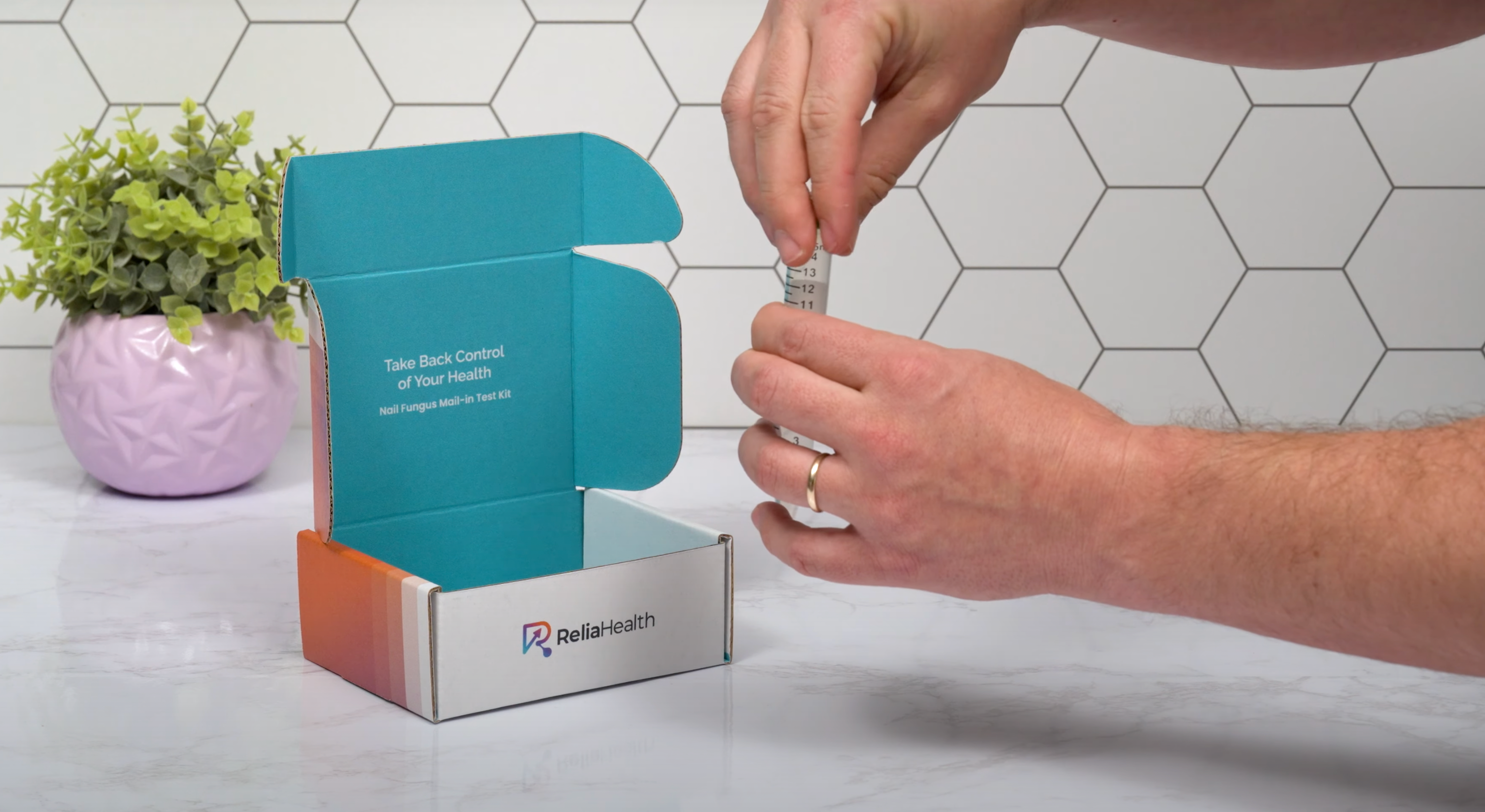
ReliaHealth: Nail Fungus - Collect + Ship Your Sample

ReliaHealth Mail-in Test Kit
- Our tests detect both fungus and bacteria
- No office visits
- No prescription
- Results in 24-48 hrs after sample received

The Gold Standard
ReliaHealth Mail-in Nail Fungus Test Kits are the Gold Standard- offering patients the fastest, most accurate method for diagnosing nail fungus or bacteria, right from the comfort of home.

Doctor Prescribed Culture
- Can only detect fungus or bacteria
- Required in-office doctor’s visit
- No antibiotic resistance panel included
- Results in 10-14 days
The Lab
The ReliaHealth specialized laboratory partners are able to effectively identify and scan for antibiotic-resistant bacteria and fungi to provide you with a proper treatment plan for your specific infection. Our laboratory partners are HIPAA Compliant and take the utmost care to ensure your privacy. Our custom in-house patient portal utilizes high levels of encryption to store your data securely.
- No extra cost or co-pays required.
- We accept FSA and HSA cards
- DNA Amplification technology for faster, more accurate results
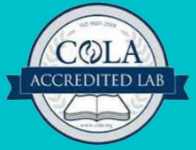

Compare the Testing Process
Doctor-Prescribed Nail Fungus Culture Process:
- 1. Schedule a primary care doctor’s appointment which requires waiting a few days to a week to come in.
- 2. Pay for the visit.
- 3. Wait to be seen
- 4. Get referred to a podiatrist
- 5. Pay for the visit
- 6. Wait to be seen
- 7. Submit your nail sample.
- 8. Doctor’s office sends the nail sample to a lab that takes about 7-20 days to process. The lab can only process a test for either bacteria or fungus. Not both.
- 9. Get billed for lab testing.
- 10. Schedule another doctor’s appointment to review results.
- 11. Return to the doctor’s office to obtain test results that are only up to 50% accurate.
- 12. Pay for the visit.
- 13. Obtain an anti-fungal prescription when you may need an antibiotic treatment as well. This does not fully treat the problem.
- 14. Start the process all over again.
ReliaHealth Nail Fungus RT-PCR testing Process:
- 1. Purchase the ReliaHealth test kit and get it sent straight to your door with free delivery.
- 2. Collect and ship your sample using a free prepaid mailing label
- 3. Log in to our patient portal within 24-48 hours after submitting your sample and see your results.
- 4. Results will show with 98% accuracy which bacteria and/or fungus was detected as well as antibiotic recommendations (based on the kit you purchased.)
- 5. Download results and share with your primary care doctor or schedule a telehealth visit to obtain the correct prescription fast.
- 6. Enjoy your pain-free, healthy nails!
Did You Know?
- Nail Fungus is highly contagious
- Couples and family members can transfer fungus through sharing of shoes, nail clippers, and bathrooms
- Nail salons, public pools, and public bathrooms are major carriers of fungus
FAQ
Bacteria
Clostridium novyi
Clostridium perfringens
Clostridium septicum
Corynebacterium sp
Cutibacterium acnes
Enterococcus faecalis (S)
Enterococcus faecalis (VRE)
Enterococcus faecium (S)
Enterococcus faecium (VRE)
Moraxella Catarrhalis
Staphylococcus aureus (MRSA)
Staphylococcus aureus (MSSA)
Staphylococcus sp. Coagulase-Negative
Staphylococcus epidermidis (MRSE)
Staphylococcus epidermidis (MSSE)
Staphylococcus haemolyticus
Staphylococcus lugdunensis
Staphylococcus saprophyticus
Strep agalactiae
Strep pneumonia
Strep pyogenes
Streptococcus dysgalactiae
Acinetobacter baumannii
Bacteroides fragilis
Citrobacter freundii
Enterobacter aerogenes
Enterobacter Cloacae
Escherichia coli (ESBL)
Escherichia coli (KPC)
Escherichia coli
Kingella kingae
Klebsiella oxytoca
Klebsiella pneumoniae
Morganella morganii
Prevotella loescheii
Proteus mirabilis
Proteus vulgaris
Pseudomonas aeruginosa
Serratia marcescens
Fungi
Acremonium strictum
Aspergillus fumigatus
Aspergillus niger
Aspergillus versicolor
Candida albicans
Candida glabrata
Candida krusei
Candida lusitaniae
Candida parapsilosis
Candida tropicalis
Epidermophyton floccosum
Fusarium solani
Microsporum audouinii
Microsporum canis
Neofusicoccum mangiferae
Scopulariopsis brevicaulis
Trichophyton interdigitale
Trichophyton rubrum
The 3-in-1 Nail Bacteria & Fungus Plus Antibiotic Resistance Panel Mail-In Test Kit identifies 11 antibiotic classes that the bacteria in your nail infection may be resistant to and provides recommended antibiotics to treat the infection.
Antibiotic Classes
AmpC
Carbapenems
ESBL
Fosfomycin
Macrolide
Methicillin
Quinolone & Flouroquinolone
Tetracycline
Sulfonamide
Vancomycin
VIM/IMP-7
Unlike other tests such as culture tests which have 50% accuracy or test
strips which have 30% accuracy, ReliaHealth’s RT-PCR (Real Time Polymerase
Chain Reaction) also known as NAAT tests (Nucleic Acid Amplification Tests) are
98% accurate and can find evidence of disease in the earliest stages of
infection.
RT-PCR/NAAT tests work because they identify small amounts of DNA or RNA in the test samples. They can, therefore, be used to identify bacteria, viruses, and
other pathogens even when the material of interest is present in very small
amounts.
Other tests may miss early signs of disease because there aren’t enough
viruses, bacteria, or other pathogens in the sample, or your body hasn’t had
enough time to develop an antibody response. The patient is left suffering with
symptoms for extended periods of time until an infection can be determined.
With ReliaHealth’s RT-PCR technology, you don’t have to wait.
Polymerase Chain Reaction (PCR) technology was invented by Kary B. Mullis, an American biochemist. Mullis developed the PCR technique in 1983, and he was awarded the Nobel Prize in Chemistry in 1993 for this groundbreaking invention. Kary B. Mullis’ development of PCR revolutionized molecular biology and diagnostics. PCR has become an essential tool in various scientific fields, including genetics, forensics, and medical diagnostics. The ability to amplify and analyze DNA rapidly and efficiently has had a profound impact on scientific research and clinical diagnostics.https://www.nobelprize.org/prizes/chemistry/1993/mullis/facts/
Antibiotics are medicines used to fight bacterial infections. Overtime, bacteria has developed resistance to antibiotics due to the over-prescription of these medicines in both humans and livestock.
An antibiotic resistance panel can help find out which antibiotic the bacteria in your UTI or Nail Infection is resistant to so that you are not prescribed the incorrect treatment against the bacteria.
This is why ReliaHealth 2-in-1 UTI Test and the ReliaHealth 3-in-1 Nail Test provides an antibiotic resistance panel which detects 24 antibiotic resistance genes found in the strains of bacteria that are most commonly the cause of UTI’s and Nail Infections.
This allows for the correct antibiotic prescription to fight off your infection and get rid of it for good.
Other names: antibiotic susceptibility test, antibiotic sensitivity testing, antimicrobial susceptibility test
With ReliaHealth test kits your results are provided 1-2 business days after receiving your sample.
Fungal nail infections are common and are caused by fungi that live in the environment. They enter through small cracks in your nail or nearby skin, causing infections. Fungal infections can affect any part of the body. Fungi are normally present in and on the body alongside various bacteria. When a fungus begins to overgrow, you can get an infection. Onychomycosis, also called tinea unguium is a fungal infection that affects either the fingernails or toenails. Fungal infections normally develop over time, so any immediate difference in the way your nail looks or feels may be too subtle to notice at first.
Your sample analysis and antibiotic sensitivity results can be downloaded directly from our HIPAA Compliant, private patient portal. Simply download and email your results to your doctor for treatment. You can also set up a Telehealth appointment with our partner Sesame by clicking here.
A same-day telehealth appointment is easy to set up with our partner Sesame. Click here to schedule a consultation today! Use code Sesame15 to receive 15% off your appointment.
If toenail fungus goes untreated it can lead to the nail becoming thicker and more misshapen. It can affect the way you walk and make getting around painful and overall walking uncomfortable. In some cases the nail can completely separate from the nail bed and would need to be removed. This can cause additional foot pain and difficulty walking if on the toenail.
Toenail fungus can also spread to the surrounding skin causing athlete’s foot. Athlete’s foot results in itchy, cracked and red skin. In severe cases the spread of bacteria from an untreated nail infection can cause cellulitis. Cellulitis is a condition when skin become red, swollen, and painful to the touch due to bacterial infection. This infection can spread into the bloodstream and become life-threatening for many individuals. This is the most serious result which can be avoided if the nail infection is diagnosed properly. You can obtain the right diagnosis quickly and accurately with our ReliaHealth RT-PCR test. Once you get your results the right treatment can take place.
There are many different causes of fungal nail infections. Each cause has a treatment of its own. Although some of the causes of a fungal nail infection are preventable, some risk factors can increase the likelihood of developing an infection. You’re more likely to develop an infection if you:
- Have diabetes
- Have poor circulation
- Are over the age of 65
- Wear artificial nails
- Swim in a public swimming pool
- Have a nail injury
- Have a skin injury around the nail
- Have moist fingers or toes for an extended period of time
- Have a weakened immune system
- Wear closed-toe shoes, such as tennis shoes or boots
Fungal infections are not the only possible cause of nail problems. Other conditions can look similar to fungal nail infections. Oftentimes the nail infection is either or both bacterial and/or fungal. To confirm your diagnosis and the correct form of treatment, a laboratory test of your nail clipping is necessary. Reliahealth makes it easy to submit your nail clippings and get accurate results 24-48 hours after receiving your sample.
Nail fungus, also known as onychomycosis, is typically caused by various types of fungi (most commonly dermatophytes) that infect the nails. Here are some common ways that people can get nail fungus:
- Contact with Infected Surfaces: Fungi that cause nail infections are often present in warm and moist environments, such as public swimming pools, locker rooms, and showers. Walking barefoot in these areas can expose your feet to the fungus.
- Contaminated Tools: Sharing nail clippers, files, or other grooming tools with someone who has a nail fungus can contribute to its spread. It’s important to disinfect or sterilize these tools regularly.
- Trauma or Injury: A nail that has been injured or traumatized is more susceptible to fungal infections. This can include stubbing your toe, dropping something heavy on your foot, or any other type of injury that affects the nail.
- Poor Foot Hygiene: Not keeping your feet clean and dry, especially in between the toes, can create an environment where fungi thrive. Wearing damp or sweaty shoes for extended periods can also contribute to fungal growth.
- Weakened Immune System: People with weakened immune systems are more prone to fungal infections, including nail fungus. Conditions such as diabetes, HIV, and certain medications can compromise the immune system.
- Age: As people age, their nails can become more brittle and prone to cracks and breaks, providing an entry point for fungi. Additionally, blood circulation may decrease with age, making it harder for the immune system to combat infections.
- Wearing Tight Shoes or Artificial Nails: Shoes that are too tight can cause pressure and moisture buildup around the toes, creating an environment conducive to fungal growth. Similarly, artificial nails can create a barrier that traps moisture and fosters fungal infections.
To reduce the risk of developing nail fungus, it’s essential to practice good foot hygiene, keep your feet clean and dry, wear breathable shoes, avoid walking barefoot in public places, and refrain from sharing personal grooming tools. If you suspect a nail fungus infection, order the ReliaHealth test kit and submit your nail sample to our state of the art COLA Accredited and CLIA Certified lab partners. Obtain results 24-48 hours after the sample is received. Then simply share your results with your healthcare provider to obtain the right treatment.
Nail fungus can manifest in various ways, and its appearance can depend on the specific type of fungus causing the infection. Common signs and symptoms of nail fungus (onychomycosis) include:
- Discoloration: One of the most noticeable signs is a change in the color of the affected nail. The nail may turn yellow, brown, or white. In some cases, it can become green or black.
- Thickening: The infected nail often becomes thicker than usual. As the infection progresses, the thickness may increase, making the nail difficult to trim.
- Brittleness: Infected nails are often brittle and may crumble or split easily. You may notice that the edges of the nail become irregular.
- Distorted Shape: The nail may lose its normal shape and contour. It may become distorted, with an uneven or irregular surface.
- Lifting of the Nail: The nail may separate from the nail bed, a condition known as onycholysis. This can create a gap where debris and fungus can accumulate.
- Changes in Texture: Infected nails can develop a rough or pitted texture. They may also develop small pits or dents on the surface.
- Debris Accumulation: Fungus-infected nails often accumulate debris under the nail. This debris can include fragments of the nail, skin, and the fungus itself.
- Foul Odor: In some cases, a foul odor may be present, especially if the infection has progressed and there is a buildup of debris under the nail.
It’s important to note that these symptoms can vary in severity, and not all individuals with nail fungus will experience all of them. If you suspect you have a nail fungus infection, it is advisable to order a ReliaHealth test kit and submit a nail clipping to obtain a proper diagnosis. Early intervention is crucial for effectively managing and eliminating nail fungus.
A fungal nail infection occurs due to the overgrowth of fungi on the toenail, fingernail, or under the toe of the nail known as the nail bed. Fungi flourish in warm and moist temperatures. The fungal nail infection is a serious problem and may cause damage to the nails. It is highly contagious and can spread easily to a healthy individual from an infected person.


